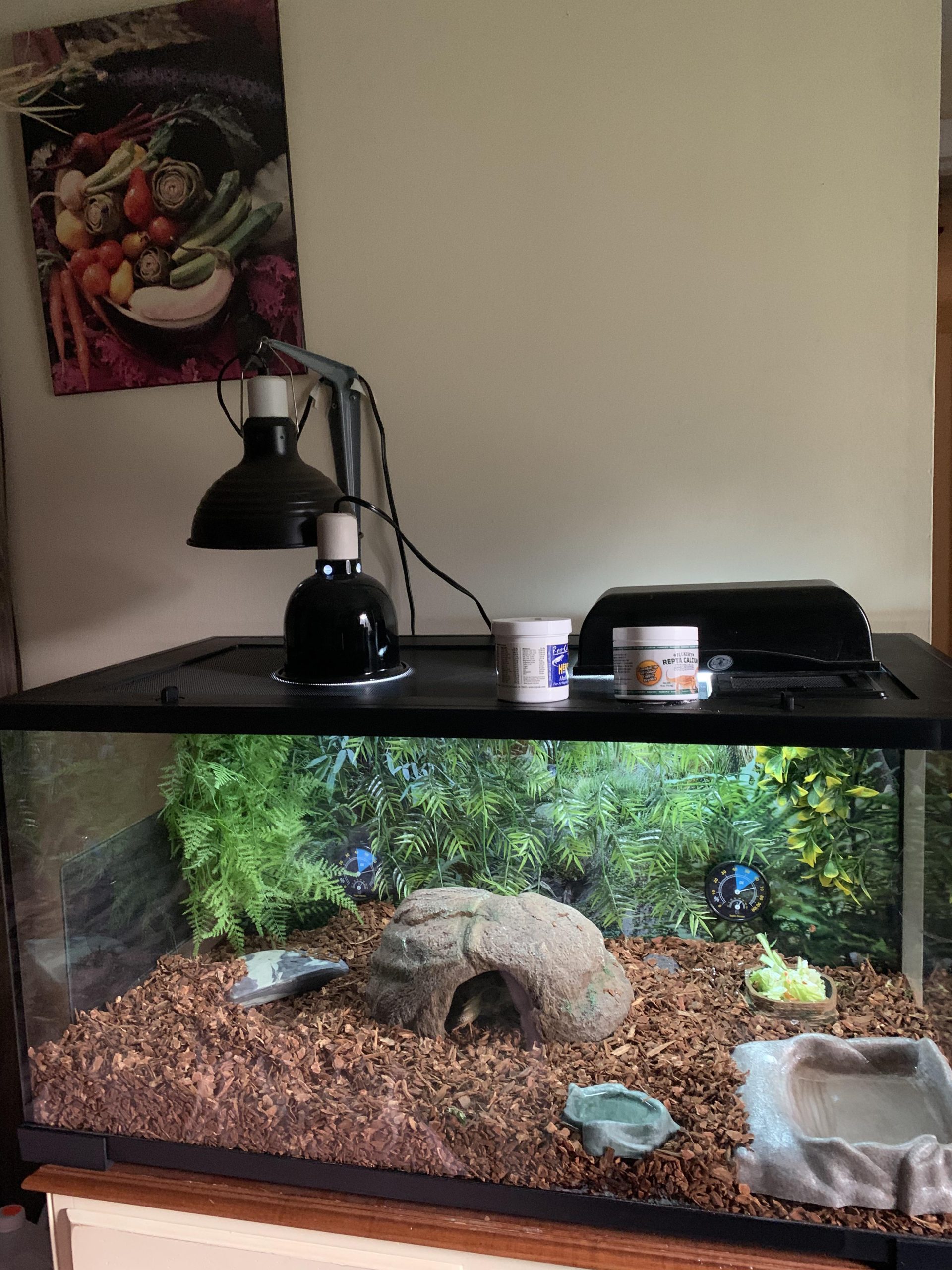Yes, a tortoise needs a heat lamp to maintain its body temperature and overall health. Providing a heat lamp helps regulate the tortoise’s internal temperature and creates a suitable environment for proper digestion and metabolic function.
The heat lamp should be set up in the enclosure, ensuring that there is a warm side and a cooler side, allowing the tortoise to choose the level of warmth it needs. It is important to monitor the temperature and provide a uvb light source as well, as tortoises require ample ultraviolet light for proper shell growth and vitamin d synthesis.
Overall, a heat lamp is essential for the well-being of a tortoise.

Credit: www.thetortoiseshop.com
Why Tortoises Need Heat Lamps
Tortoises need heat lamps because they require specific temperature conditions, similar to their natural habitat. Temperature plays a vital role in the health of tortoises. Inadequate heat can pose risks to their well-being. Maintaining the right temperature is crucial, as it helps regulate their metabolism and digestion.
Heat lamps provide the necessary warmth for tortoises to thrive. The natural habitat for tortoises consists of warm climates, and replicating these conditions in captivity is essential for their overall health. Without a heat lamp, tortoises may experience various health issues, including reduced appetite and activity levels.
It’s important to understand the significance of heat in providing optimal care for these unique creatures.
Understanding Tortoise Heating Requirements
A tortoise’s heating requirements are crucial for their overall health and well-being. Understanding the optimal temperature range is essential. Several factors can affect their heating needs, including species variations, environmental factors, and age and growth stage. Each species may have specific temperature preferences.
Environmental factors such as climate and habitat also play a role. Younger tortoises may require higher temperatures compared to adults. It is important to provide a suitable heat source to maintain the desired temperature range within their enclosure. By meeting their heating needs, tortoises can stay active, maintain a healthy metabolism, and thrive in their environment.
Choosing The Right Heat Lamp For Your Tortoise
Choosing the right heat lamp for your tortoise depends on various factors. There are different types of heat lamps available for tortoises, such as incandescent bulbs, ceramic heat emitters, and mercury vapor bulbs. Each type has its own advantages and considerations.
When determining the wattage and distance, it is important to ensure that it provides a suitable temperature gradient for your tortoise. This allows them to move around and regulate their body temperature effectively. It is crucial to provide the right amount of heat without overheating or underheating them.
Therefore, it is essential to carefully consider the type of heat lamp and its specifications to create a comfortable and safe environment for your tortoise. Holistically considering these factors will help to meet the specific heating needs of your tortoise and promote their overall well-being.
Setting Up A Heat Lamp For Your Tortoise
Setting up a heat lamp for your tortoise involves creating a proper basking spot, choosing the right area, and placing the lamp at the correct height. It’s important to establish a temperature gradient and take safety measures to prevent burns or injuries.
When choosing the basking area, consider your tortoise’s size and behavior. Adjust the lamp’s height to ensure the right amount of heat reaches your pet. Providing proper ventilation is crucial to prevent overheating. Take precautions to avoid any accidents and ensure a safe environment for your tortoise.
By following these guidelines, you can create a comfortable habitat for your reptile friend without any unnecessary risks.
Monitoring And Maintaining The Heat Lamp
Monitoring and maintaining the heat lamp is crucial for a tortoise’s well-being. Regular temperature checks ensure the optimal environment. Adjusting the heating settings accordingly helps maintain the required temperature. It’s important to replace bulbs and equipment when necessary to ensure effectiveness.
Overall, keeping a close eye on the heat lamp is essential for the tortoise’s health and comfort.
Additional Considerations For Tortoise Care
A tortoise requires a heat lamp for its well-being, but there are other important considerations. Uvb lighting is necessary for synthesizing vitamin d. humidity needs to be adequately maintained for the tortoise’s health. Hiding places are crucial to provide a sense of security and privacy.
Dietary adjustments should be made based on the temperature to ensure optimum nutrition. Following these guidelines is vital for the overall care and happiness of a tortoise.
Common Misconceptions About Tortoise Heating
A heat lamp is not always necessary for tortoises. Some tortoise species do not require heat lamps at all. Overheating can actually be harmful to tortoises and lead to health issues. It is important to provide alternative heating options such as heat pads or ceramic heaters to regulate the temperature for these reptiles.
These alternative options can be just as effective in creating the right environment for tortoises without the risk of overheating. Taking into consideration the natural habitat and specific needs of each tortoise species is crucial in determining the appropriate heating method.
By providing the right temperature and avoiding overheating, tortoises can thrive in captivity and remain healthy.
Conclusion
Providing a heat lamp for your tortoise is crucial for its well-being and overall health. The heat lamp serves as a source of warmth that mimics the natural conditions of their native habitat, allowing them to regulate their body temperature effectively.
By ensuring that your tortoise has access to a heat lamp, you are creating an environment that promotes proper digestion, metabolism, and immune function. Additionally, the heat lamp helps prevent conditions like shell rot and respiratory issues that can arise from inadequate warmth.
However, it’s important to monitor the temperature and make adjustments accordingly to avoid overheating. Remember to provide a temperature gradient within the enclosure to allow for thermoregulation and create a comfortable space for your tortoise. Taking these measures will ensure that your tortoise thrives and enjoys a healthy and happy life.






Leave a Reply